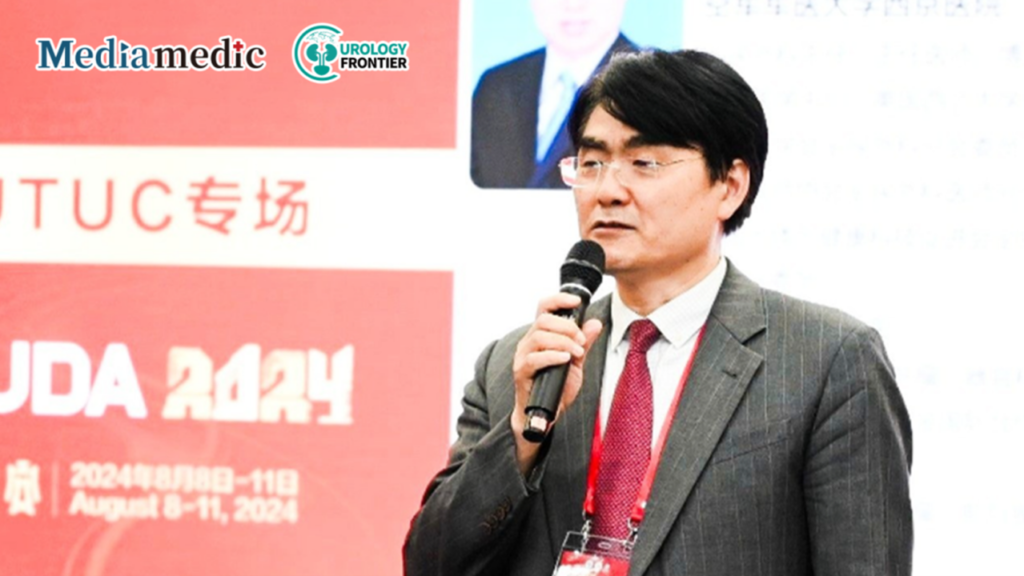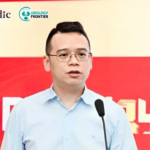
Editor's Note: From August 8th to 11th, 2024, the Annual Meeting of the Urology Physicians Branch of the Chinese Medical Doctor Association (CUDA) was held in Xi'an. The conference, organized by the Chinese Medical Doctor Association and the Urology Physicians Branch, and hosted by Xijing Hospital of the Air Force Medical University, with support from the Urology Physicians Branch of the Shaanxi Medical Doctor Association, showcased the latest achievements in urology from a broad and diverse perspective under the theme "Healthy China, Urology Leads the Way." On the first day of academic sessions (August 9th), Urology Frontier interviewed the honorary chairman of the conference, Dr. Liqun Zhou of Peking University First Hospital, who shared insights on the highlights of the conference, the current status of surgical robot development in urology, and provided guidance for the development of multidisciplinary team (MDT) treatment in grassroots hospitals.01
Urology Frontier: The agenda of this CUDA conference is rich and diverse, summarizing many recent advances in the field of urological oncology. What do you think are the key highlights and points of interest that deserve special attention?
Dr. Liqun Zhou: The annual CUDA conference brings together the latest clinical and research advancements in urology, and this year’s event has several noteworthy highlights:
First, in the area of domestic surgical robots, we have broken the monopoly of the imported Da Vinci robot. Currently, there are over 14 manufacturers in China developing surgical robots, with four—Kondor®, Jingfeng®, MicroPort®, and Surui®—already available on the market. Although their market share is not yet comparable to that of the Da Vinci robot, they have greatly supported the clinical work of surgeons. The development of domestic surgical robots is undoubtedly a major highlight of this conference.
Second, in terms of surgical methods, techniques, and skills, many colleagues have brought innovative improvements, which are the foundation of our work as surgeons. For example, our team at Peking University First Hospital presented the IUPU (The Institute of Urology, Peking University) techniques, which include innovations at the basic, clinical, and technical levels. Colleagues from across the country also showcased many outstanding achievements.
Third, Chinese urologists have conducted numerous prospective, randomized, controlled clinical trials (RCTs) and published many high-level articles. These contributions have significantly influenced the updating of guidelines by various national and international associations, such as the Chinese Urological Association (CUA), CUDA, the Chinese Society of Clinical Oncology (CSCO), the National Comprehensive Cancer Network (NCCN), the American Urological Association (AUA), and the European Association of Urology (EAU). This has truly changed clinical practice.
02
Urology Frontier: As Chinese technology advances, domestic surgical robots are increasingly being used in the field of urology. Could you share some of your experiences related to this, particularly in light of the achievements of the Peking University Institute of Urology?
Dr. Liqun Zhou: The rise of domestic surgical robots has broken the monopoly of the Da Vinci robot, with an increasing number of domestic robots now being marketed. In 2023, we participated in the annual meeting of the Society of Robotic Surgery (SRS). The internationally renowned urologist, Professor Vipul Patel, made a special trip to China before the conference to invite domestic robot manufacturers to participate. At the conference exhibition, the only full machines on display, apart from the Da Vinci robot, were those from four domestic manufacturers, raising the overall quality of the exhibition. This indicates that domestic robots have already established a strong reputation internationally.
Our partner at the Peking University Institute of Urology is Kondor Robot®. The Kondor robot differs from the Da Vinci robot in principle. The Da Vinci robot uses an immersive view, requiring the surgeon to lower their head and bend over to operate, although recent improvements have been made in adjusting the eyepiece with the surgeon’s posture. In contrast, the Kondor robot uses an open surgeon console that provides a three-dimensional high-definition view, protecting the surgeon’s neck. We have been involved in the development and clinical application of the Kondor robot from its first to its third generation, and have published a series of research results in internationally renowned journals, which have been recognized globally.
We have also conducted remote surgery in collaboration with three centers and broadcasted the procedures, accumulating extensive experience in remote surgery. This year, Academician Zhang Xu participated in the European Laparoscopic and Robotic Surgery Challenge Conference in Rome, Italy, where he used the Jingfeng® robot to perform and demonstrate the world’s longest-distance remote radical prostatectomy for prostate cancer across the Eurasian continent. Academician Zhang operated from Rome, while the patient was at the General Hospital of the People’s Liberation Army in China, over 8,000 kilometers away. The latency effect was almost imperceptible, which was incredibly impressive. Initially, we sought collaboration with the Da Vinci robot, but for some reason, they did not open their remote ports and declined our request. Domestic robots have not only taken on this challenge but have also achieved outstanding results in remote surgery. Additionally, Professor Li Xuesong performed surgery using a dual-console Kondor robot at Peking University First Hospital, with the procedure being broadcast live to the conference in Rome. I hosted the live broadcast, showcasing the capabilities of our domestic robots and the superb surgical skills of Chinese urology experts to an international audience.
03
Urology Frontier: Urological tumors often require a combination of surgery, chemotherapy, radiotherapy, targeted therapy, and immunotherapy to improve patient outcomes. How do you think MDT team collaboration in grassroots hospitals can be promoted?
Dr. Liqun Zhou: The concept of MDT is becoming increasingly well-recognized, and the key to promoting MDT collaboration in grassroots hospitals is to understand the importance of MDT. Take prostate cancer as an example: before MDT became widespread, the treatment a patient received often depended on the specialty of the doctor they first consulted. If the first doctor was a urologist, the patient might undergo surgery first; if it was a radiation oncologist, the patient might receive radiotherapy first; if it was a medical oncologist, chemotherapy or immunotherapy might be the initial treatment. Each specialist would provide a treatment plan based solely on their expertise, which could result in a less comprehensive treatment strategy.
MDT involves a collaborative effort among specialists from urology, medical oncology, nuclear medicine, radiology, pathology, and other fields. These multidisciplinary doctors work together to diagnose and treat a single patient from multiple perspectives. Through focused discussions and consideration of both domestic and international research developments, the team aims to provide the most reasonable and appropriate diagnosis and treatment plan to maximize patient benefit. Today, MDTs are thriving in large tertiary hospitals across various fields, and our urology department at Peking University First Hospital has been implementing MDTs for many years. I believe the fundamental purpose of MDT is to find the most appropriate treatment plan for each patient based on their specific disease condition, ultimately extending the patient’s life and improving their quality of life.
Liqun Zhou :
- Position: MD, Professor (Second Grade), Chief Physician, and Doctoral/Postdoctoral Supervisor.
- Current Roles: Director of the Institute of Urology, Peking University. Chair of the Department of Urology, Peking University Health Science Center. Honorary President and Former President of the Urology Physicians Branch of the Chinese Medical Doctor Association. Standing Committee Member of the Urology Branch of the Chinese Medical Association. Vice Chairman of the Urology Branch of the Beijing Medical Association. Chairman of the Urology Medicine Committee of the China Industry-University-Research Collaboration Association. Executive Deputy Chairman of the Surgery (Urology) Committee of the Chinese Medical Doctor Association’s Postgraduate Medical Education Branch. Vice Chairman of the Urology Professional Committee of the Chinese Research Hospital Association. Leader of the Minimally Invasive and Robotic Surgery Group of CUDA. Deputy Leader of the Minimally Invasive Surgery Group of the CUA. Leader of the CUA and CUDA UTUC Collaborative Group. Leader of the CUA UTUC Diagnosis and Treatment Guidelines Expert Group. Deputy Editor-in-Chief of the Chinese Journal of Urology. Editor-in-Chief of the Chinese edition of the Journal of Clinical Oncology Urologic Oncology Special Issue. International Editorial Board Member of The Journal of Urology.
- Awards: Recipient of the China Medical Doctor Award, Wu Jieping Urology Medicine Award, Distinguished Contribution Award from the World Chinese Urological Society, CUA Golden Cystoscope Award, National Famous Doctor Award, and the Golden Scalpel Award, among others.


